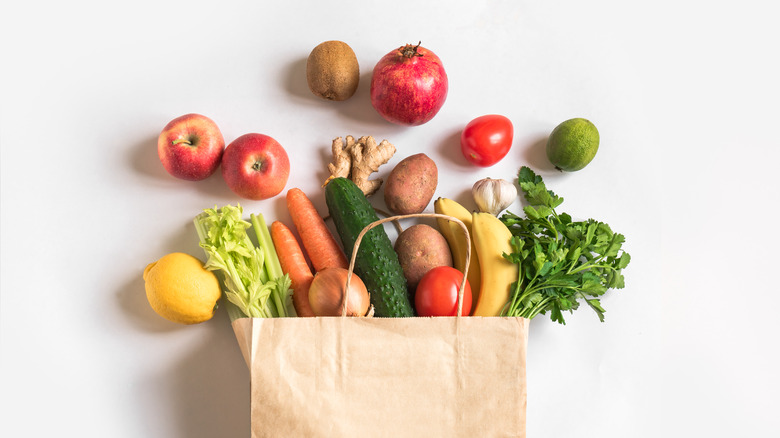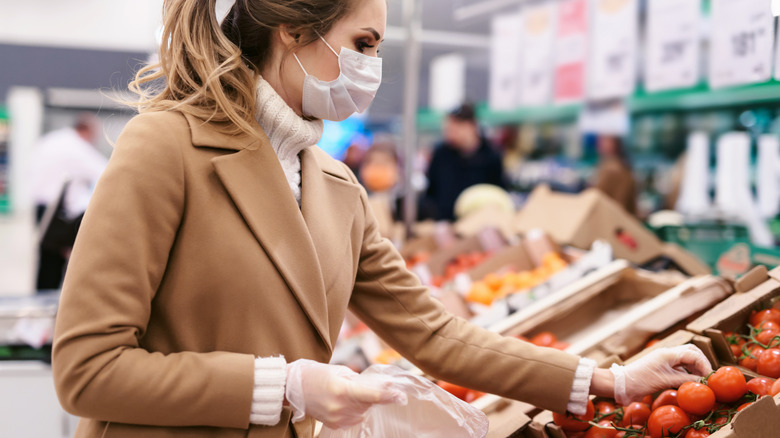New Study Finds COVID Can Survive On Food And Packaging
The pandemic transformed life as we knew it. With the coronavirus impacting all facets of food, many wondered whether the items we bought at the grocery store could also risk our safety. Although The Food Standards Agency (FSA) initially published research in 2020, expressing that food was very unlikely to survive on food and packaging, a new study carried out by the University of Southampton in conjunction with the FSA now confirms exact virus survival rates.
While SARS-CoV-2 was not considered a food safety hazard by outlets like the FSA, Food and Agriculture Organization of the United Nations (FAO), and the International Commission of MIcrobiologic Specifications for Food (ICMSF), unless contaminated by infected individuals, how long these foods could be infected remained unknown until now. That said, after testing an array of produce, meats, and baked goods, in addition to various packaging materials, Food Safety News confirms that COVID-19 can survive on food and packaging, but with varying survival rates.
For foods like croissants, olives, and apples, Food Safety Magazine explains that viral decreases can happen within hours, which may be due to inhibitors like the pastry's egg wash coating or flavonoids in a vegetable or fruit's skin. However, items like ham and cheese displayed high levels of the virus even after a week, which could be linked to their higher concentrations of moisture, fat, and protein. As for packaging, all materials (composite, aluminum, and polyethylene terephthalate) displayed a significant drop in contamination over 24 hours, even in humid conditions.
Consumers don't need to worry
"In the early stages of the pandemic, we didn't know much about how the virus would survive on different food surfaces and packaging, so the risk assessment was based on a worst-case assumption," explained Anthony Wilson, Leader of the Microbiological Risk Assessment Team (via FSA).
However, Food Safety Magazine reports that the new findings confirm that most goods and packaging materials pose little risk to well-being as rates of viral contamination typically plummet within the first 24 hours. That said, the risk is further minimized when food is handled properly to prevent the transmission of any pathogens. This is why the U.S. Food and Drug Administration recommends washing your hands before and after handling food and its packaging in addition to regularly disinfecting kitchen surfaces, and taking care to properly store foods to better avoid both spoilage and cross-contamination.
According to Wilson, the bottom line is simple: "This [new] research gives us additional insight into the stability of coronavirus on the surfaces of a variety of foods, and confirms that assumptions we made in the early stages of the pandemic were appropriate and that the probability that you can catch COVID via food is very low."

